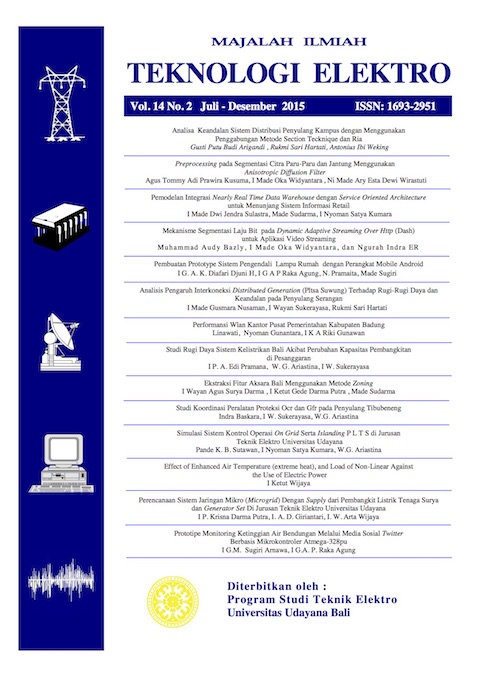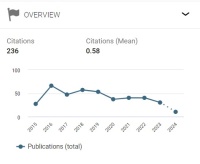Effect of Enhanced Air Temperature (extreme heat), and Load of Non-Linear Against the Use of Electric Power
Abstract
Usage Electric power is very easy to do, because the infrastructure for connecting already available and widely sold. Consumption electric power is not accompanied by the ability to recognize electric power.
The average increase of electricity power in Bali in extreme weather reaches 10% in years 2014, so that Bali suffered power shortages and PLN as the manager of electric power to perform scheduling on of electric power usage. Scheduling is done because many people use electric power as the load of fan and Air Conditioner exceeding the previous time. Load of fan, air conditioning, and computers including non-linear loads which can add heat on the conductor of electricity. Non-linear load and hot weather can lead to heat on conductor so insulation damaged and cause electrical short circuit. Data of electric power obtained through questionnaires, surveys, measurement and retrieve data from various parties.
Fires that occurred in 2014, namely 109 events, 44 is event caused by an electric short circuit (approximately 40%). Decrease power factors can cause losses of electricity and hot. Heat can cause and adds heat on the conductor electric.
The analysis showed understanding electric power of the average is 27,700 with value between 20 to 40. So an understanding of the electrical power away from the understand so that many errors because of the act own. Installation tool ELCB very necessary but very necessary provide counseling of electricity to the community.
Downloads

This work is licensed under a Creative Commons Attribution 4.0 International License





